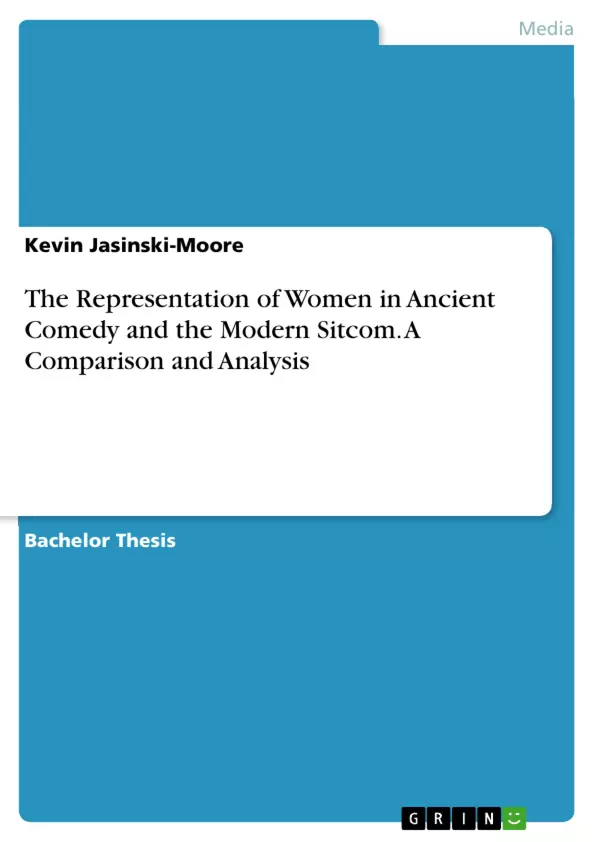This paper sets out to analyse and compare the representation of women in ancient comedy and the modern sitcom, arguing that both adhere to a dichotomy of presenting women as either "mothers" or "whores". First, it establishes the sitcom as the modern descendant of the ancient comedy while also considering crucial differences, such as the all-male cast in ancient plays and the concentration on indoor spaces (sitcom) versus outdoor spaces (ancient comedy). Subsequently, by analysing select episodes of "The Big Bang Theory" and plays such as Plautus’ "Cistellaria" and Aristophanes’ "Assemblywomen", it establishes essential ways in which the dichotomy manifests.
Inhaltsverzeichnis (Table of Contents)
- 1. Introduction
- 2. Comparing the Formats of Ancient Comedy and the Modern Sitcom
- 3. Sex-Gender Systems: One-Sex vs Two-Sex Model
- 4. Mothers and Whores: The Dichotomy of Women in Comedy
- 4.1 Women as Whores: Sexualisation and Limitation to the Body
- 4.2 Women as Mothers: Marriage, Children, and the Household
- 4.3 The Dichotomy in Action: How the Dichotomy Applies to Women
- 5. Conclusion
Zielsetzung und Themenschwerpunkte (Objectives and Key Themes)
This paper aims to analyze and compare the representation of women in ancient comedy and modern sitcoms, arguing that both formats adhere to a dichotomy of presenting women as either "mothers" or "whores." The paper will also explore how this dichotomy manifests in specific examples, including episodes of "The Big Bang Theory" and plays such as Plautus' “Cistellaria” and Aristophanes' “Assemblywomen.”
- The historical development and similarities between ancient comedy and the modern sitcom format.
- The impact of the one-sex model in the ancient world versus the modern two-sex model on the representation of women in comedy.
- The "mother and whore" dichotomy as a recurring theme in both ancient comedy and modern sitcoms.
- The differences in how the dichotomy manifests in ancient plays and modern sitcoms, including class considerations and the portrayal of more "masculine" traits in female characters.
Zusammenfassung der Kapitel (Chapter Summaries)
Chapter 1 introduces the two formats of ancient comedy and the modern sitcom, establishing the sitcom as today's equivalent of the ancient comedy based on their role in society, basic plot structure, and reliance on stereotypes. Chapter 2 defines the one-sex model of the ancient world and the modern two-sex model and illustrates how their differences influence the representation of women in comedy. Chapter 4 analyzes specific episodes of the sitcom "Big Bang Theory" and the ancient plays "Assemblywomen" by Aristophanes and "Cistellaria" by Plautus to show how both formats establish a dichotomy that leaves women with two kinds of representation: Mothers and Whores.
Schlüsselwörter (Keywords)
This paper focuses on the representation of women in ancient comedy and the modern sitcom. The key concepts and themes include the "mother and whore" dichotomy, the one-sex and two-sex models, ancient Greek and Roman comedy, and the impact of gender stereotypes in media.
- Quote paper
- Kevin Jasinski-Moore (Author), 2022, The Representation of Women in Ancient Comedy and the Modern Sitcom. A Comparison and Analysis, Munich, GRIN Verlag, https://www.grin.com/document/1328269



